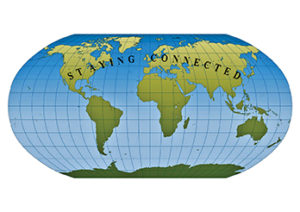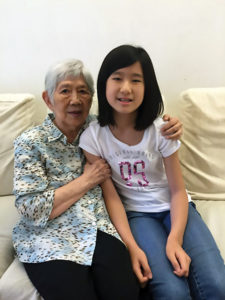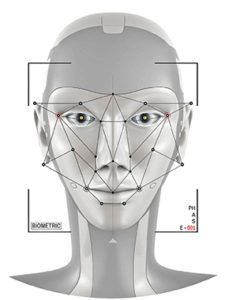Technology for Seniors: Alzheimer’s App
Posted on October 31, 2016 by bob in Health

In recent years I’ve come across a number of instances in which students have developed devices and apps to help seniors and the disabled, but I was genuinely impressed by the creation of twelve-year-old Emma Yang, one of the recipients of the “Ten Under Twenty” innovation awards announced at this year’s Consumer Electronics conference. Her creation, “Timeless,” is an app to help Alzheimer’s patients, their caregivers, and their families. Emma was inspired to create Timeless by her frustration in trying to connect with her grandmother half way around the world.

Emma Yang with her grandmother in China.
“When I was eight years old, my grandma thought I was 13,” said Emma. “And then one day, she forgot my birthday and my Dad’s birthday. My grandma suffers from Alzheimer’s Disease. She lives in Hong Kong and we live in New York. The distance makes it hard to stay engaged with her, especially as the illness progresses.”
For her grandmother, recognizing and remembering people was becoming increasingly difficult. She would also call people repetitively and repeat things she’d already said. Remembering phone numbers and addresses made it difficult to stay in touch with family and friends. Emma’s distance from her grandmother was a problem, but Alzheimer’s was also preventing them from staying connected. Emma’s Timeless app directly addresses problems of memory loss and confusion.
It’s not unusual for an Alzheimer’s patient to make multiple phone calls to the same person in a short period of time. If Timeless detects that, the app will stop the call and ask, “Are you sure you want to make this call?” Other problems include the inability to remember the names of family and friends, or even the patient’s own name. Timeless includes tools such as facial recognition to help deal with this, as well as a button to remind the patient of his or her own name.
“I utilized an artificial-intelligence-based facial recognition platform in my app,” said Emma. “When given a photo of a person, the app compares it with a pre-enrolled one and identifies who the person is. In the app, the user can recognize who is in front of them.”

The app provides family and friends with a means of updating their activities to keep the patient involved.
“My idea is simple,” Emma said. “An app that helps Alzheimer’s patients recognize their loved ones, remember events, and stay connected and engaged with the people around them.”
Emma’s hope is that the app will allow Alzheimer’s patients to maintain their independence, even if their condition isn’t curable. We caught up with Emma in Hong Kong where she was visiting her grandmother.
Emma: My dad’s a software engineer, so he helped me with the technical areas of the project. I was also supported by a doctor who specializes in Alzheimer’s Disease patients, so I gave her a demo of my app and she gave me feedback along the way that really helped me. And also for the facial recognition part of the app, where you can take a picture of a person, I had been using a platform developed by a startup in Miami called Kairos. I found them and I used the platform to develop that part of the app. They were really supportive and helped me through the process of implementing it into my app and making sure it worked.
Tech50+: How much research did you do to see if there was anything else on the marketplace that was comparable to this?
Emma: I did do a lot of research on what Alzheimer’s patients have difficulty with, things like having difficulty recognizing people and staying engaged. I tried to implement those features into the app as much as possible.
Tech50+: As near as you could tell there was nobody else doing anything quite like this, is that correct?
Emma: That’s correct. I looked around and I couldn’t find anything like this.
Tech50+: Where is the app at this stage, in terms of development and deployment?
Emma: I have a fully-functional prototype right now, but I’m still in the process of fully developing it. I plan to finish developing it and roll it out by the end of the year. I plan to be able to test it in the hands of real Alzheimer’s patients after I fully develop it.
the end of the year. I plan to be able to test it in the hands of real Alzheimer’s patients after I fully develop it.
Emma notes that while we may be a long way from a cure for this insidious disease, there are things that can be done to improve the quality of life of the patient and the family. The potential for technology to help Emma’s grandmother, and others suffering from Alzheimer’s, is what inspired her to create Timeless, allowing technology to do what it’s good at, such as facial recognition, to solve problems common to Alzheimer’s patients.
“Despite the difficulties of the illness,” said Emma, “Alzheimer’s patients too should be able to cherish the timeless moments in life.”
You can meet Emma and see a demonstration of her “Timeless” app at https://vimeo.com/168872977.
Gary Kaye is the creator and Chief Content Officer of Tech50+, (www.tech50plus.com), the leading website covering technology from the Baby Boomer perspective. Kaye has been covering high tech for more than 30 years with outlets including NBC, ABC, CNN and Fox Business. He is a regular contributor to AARP and other websites on issues regarding the nexus of technology, seniors and baby boomers.









